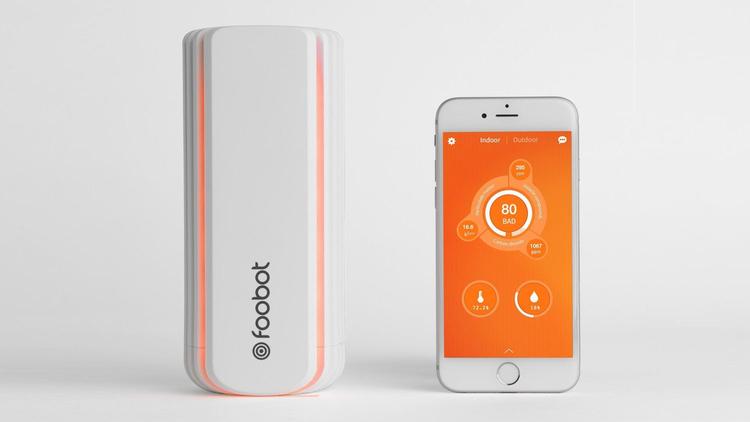According to Foobot’s makers, pollution is the fourth highest risk factor for death globally and by far the leading environmental risk for disease. Therefore good air quality is extremely important. Improving the air quality in your home can potentially benefit respiratory issues in children, as well as improve sleep, increase energy levels and improve focus and productivity.
Foobot: Price
There are other air quality monitors, most of which we haven’t yet reviewed. However, we have tested out the Canary, which combines environmental monitoring with a security camera. That costs £139.99 from John Lewis.
Foobot: Features and design
The Foobot is a small white unit measuring 172mm x 71mm. It’s good looking and has an LED at the front that changes colour to inform you whether the air quality in your home or workplace in good (blue) or bad (orange). The unit uses a number of sensors to measure volatile organic compounds, particulate matter, carbon monoxide, carbon dioxide, as well as temperature and humidity. I set up the Foobot in my living room and was impressed at how easy it was to get going. After downloading the Foobot app (available for iOS and Android), it’s just a case of following the onscreen instructions which guide you through the process of connecting the device to Wi-Fi. You’re then asked to put the Foobot in setup mode, which involves turning it upside down (it knows which way is up thanks to an on-board accelerometer). Once that’s finished, you turn it right side up and it starts to measure air quality levels. The information collected by the Foobot is presented clearly in the app. It lets you view your overall indoor air quality status as well as a breakdown of three key contributors to your homes ‘health’: carbon dioxide, volatile compounds and particulate matter. These can be viewed by the minute, hour, week or day with a simple swipe. You can also view the temperature of your home, as well as humidity and outdoor pollution levels in your area (a service provided by BreezoMeter). During a few weeks of testing, the Foobot identified that my living room had high levels of volatile organic compounds. Rather than leave you to figure out what to do, the app offers advice on how to reduce that level, such as using fewer chemicals when cleaning . You can even help the Foobot to identify specific events that may contribute to changes in pollution levels in your home by telling it when you’re cooking and cleaning via the app. Towards the end of the testing, the Foobot began sending push notifications recognising events, and asking for confirmation that I really was cooking or cleaning right then. The aim of this learning process is to improve accuracy. Obviously, you’ll need the appropriate hardware to effect useful changes such as an air purifier connected to a smart switch. At the moment the direct integrations which don’t rely on IFTTT or a smart switch are mainly thermostats and HVAC – you’ll have to open windows manually to allow fresh air into your rooms.



